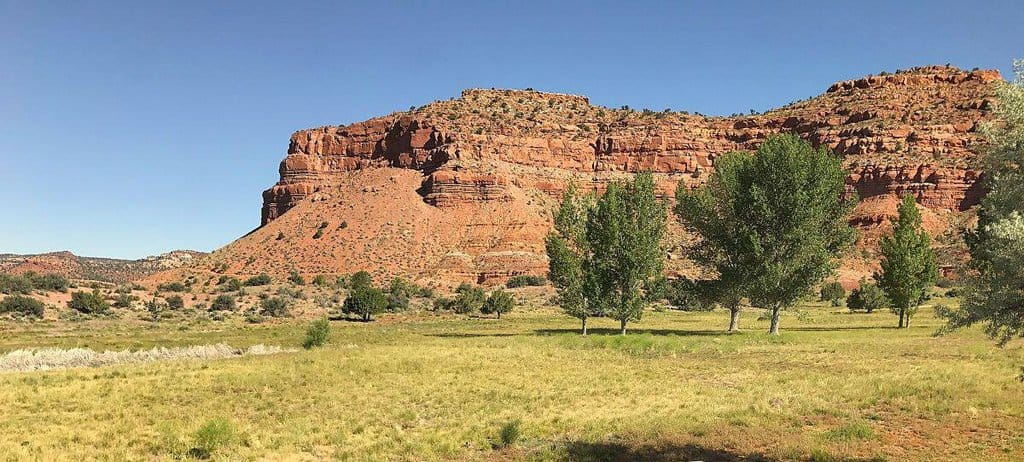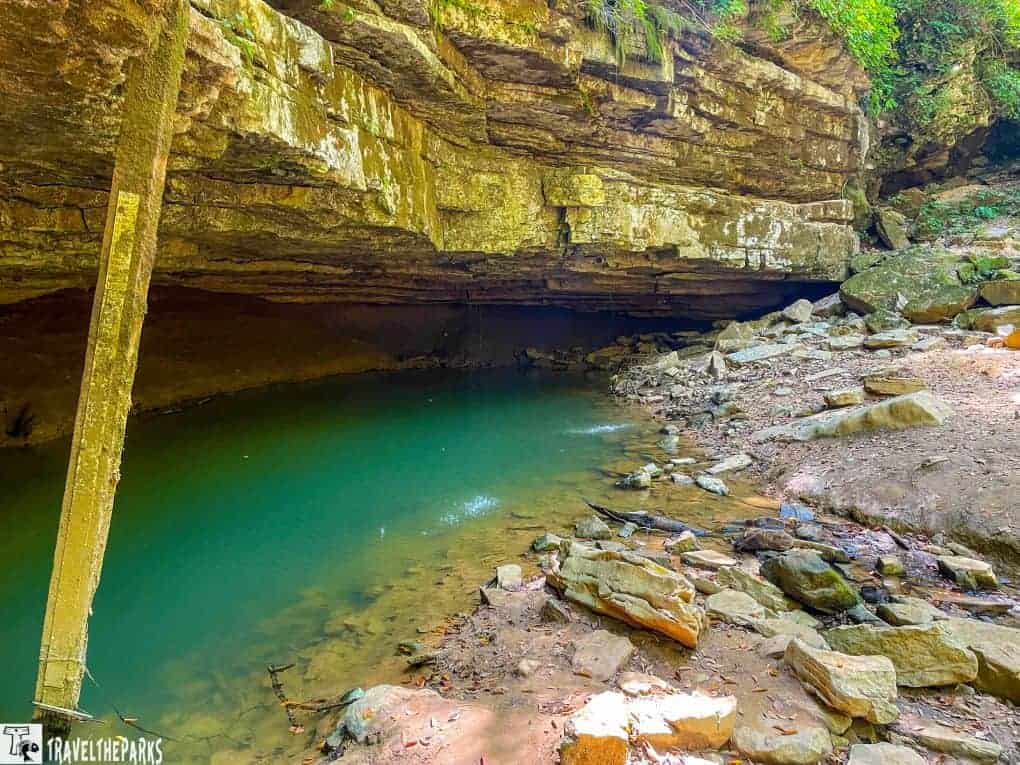Kanab is a little cowboy town off the beaten path. Most visitors stop either on their way to the North Rim of the Grand Canyon or Page, Arizona, to Lake Powell. It is worth a short stopover to discover what authentic Kanab has to offer!
To begin with, most Utah 5 travelers tend to stay in Moab as a central location to the parks, and yet Kanab is just as centrally located. Kanab has so much to offer for the outdoor enthusiast, it is the perfect hub.
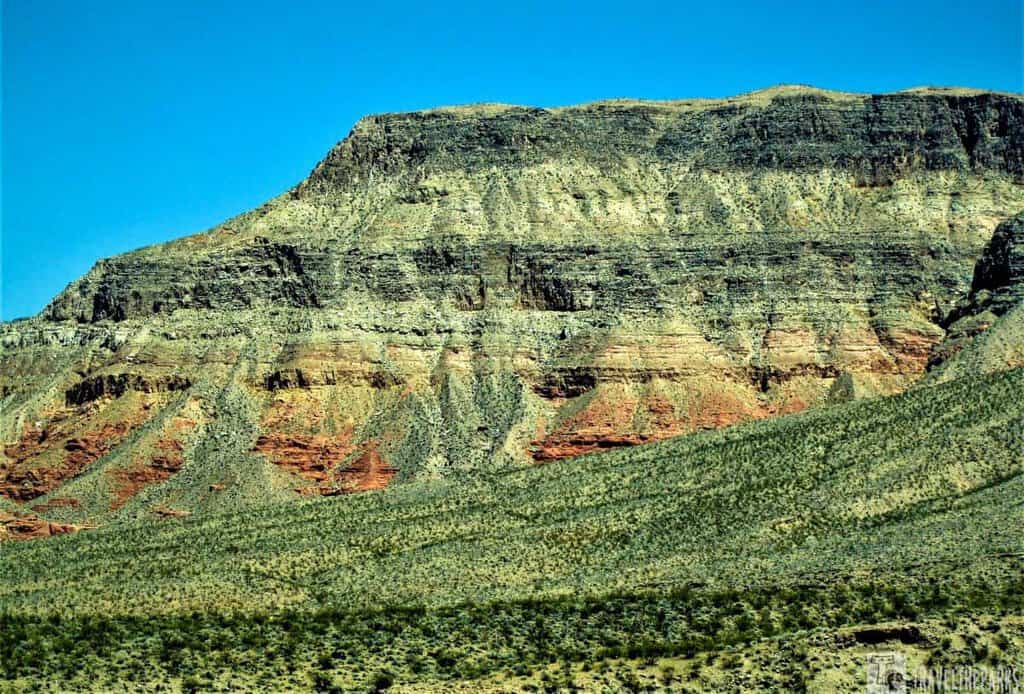
This post may contain affiliate links, meaning if you purchase something through one of these links, we may earn a small commission at no extra cost to you! Read the full disclosure policy here.
Table of Contents
Getting to the Action in Kanab
The closest international airport to Kanab, Utah, is the McCarran International Airport in Las Vegas, Nevada, about 200 miles away. The drive typically takes around 3.5 hours. Keep in mind that Kanab operates on Mountain Time, which is one hour ahead of Nevada and California.
To get to Kanab from Las Vegas, take I-15 North. After about 6 miles past St. George, Utah, take exit 16 (Hwy 9) toward Hurricane, Utah. Continue for about 10 miles, then turn right at the Main Street traffic light in Hurricane. Go one block and turn left at the 4-way stop onto Hwy 59. Follow Hwy 59 for approximately 55 miles to Fredonia, Arizona. In Fredonia, turn left (north) at the stop sign onto Highway 89, and drive 7 miles to reach Kanab, Utah.
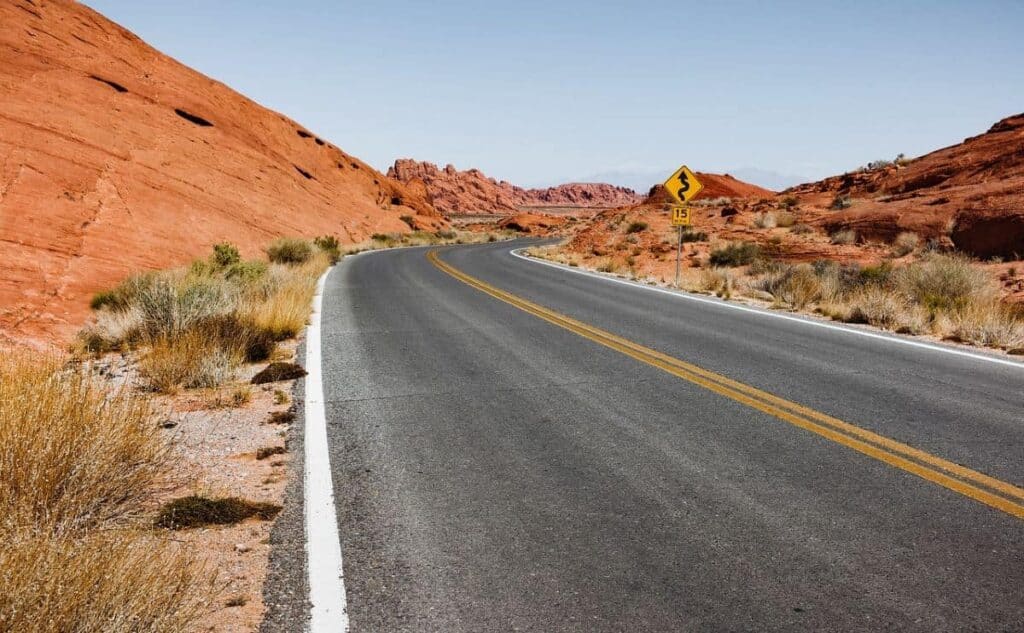
Indeed, we found Kanab to be the perfect layover during our “Grand Circle,” tour of the Utah 5 National Parks. Kanab is a Paiute Indian word meaning place of the willows. This town immortalizes the classic western, with many of the original landscapes you see in the early movies visible in all directions. We spent a few action-packed days exploring the trails and enjoying the endless views.
Genuine Kanab Originals & Real Western Legends
People credibly dub Kanab “Little Hollywood,” and there is much to discover here. In fact, Kanab made its screen debut in 1924 when Tom Mix filmed Deadwood Coach along with his co-star, Tony The Wonder Horse. Since then, more than 100 Hollywood productions have filmed Southern Utah’s gorgeous backdrop. This led Kanab’s rise to fame.
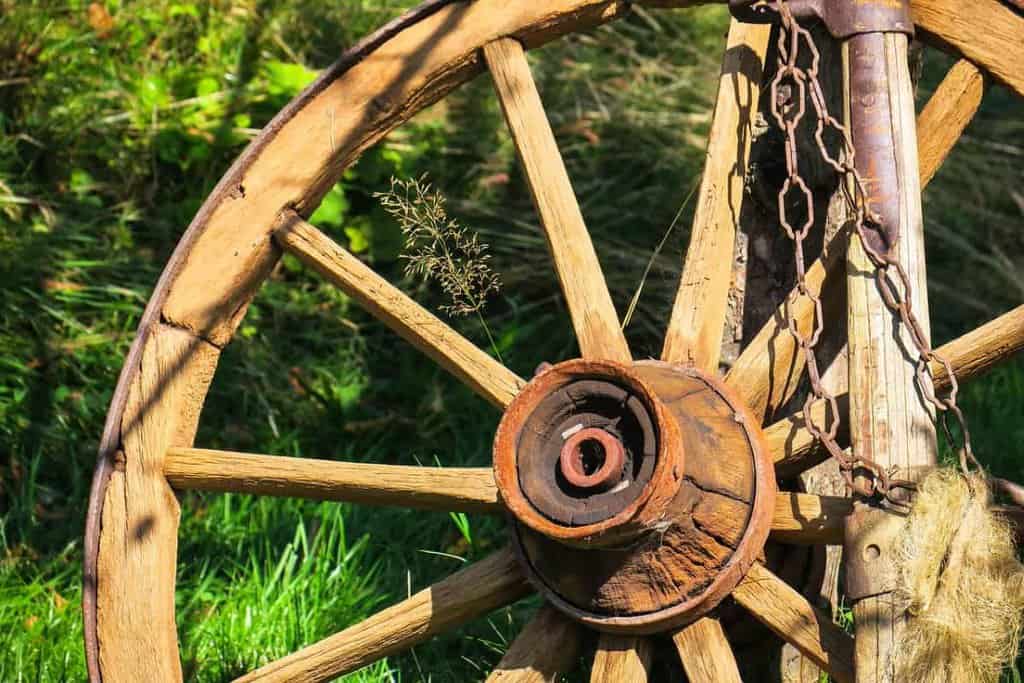
Visitor Center Uncovers the True Essence of Kanab
We made our first stretch break at the Kanab Visitors Center, conveniently found in the heart of town and within walking distance of hotels and restaurants. It’s the perfect spot to get acquainted with all that Kanab has to offer travelers. We chatted with the friendly staff, asked questions, and learned about the area’s fascinating geology and archaeology. The locals were incredibly helpful and down-to-earth. The warm hospitality of the residents always leaves a lasting impression.
Besides a well-stocked bookstore, the Kanab Visitor Center also features a topographical relief model of the landscape, a few archaeology exhibits, and a geologic cross-section mural. Be sure to ask for maps, recent road conditions, and weather reports before venturing on any hikes.
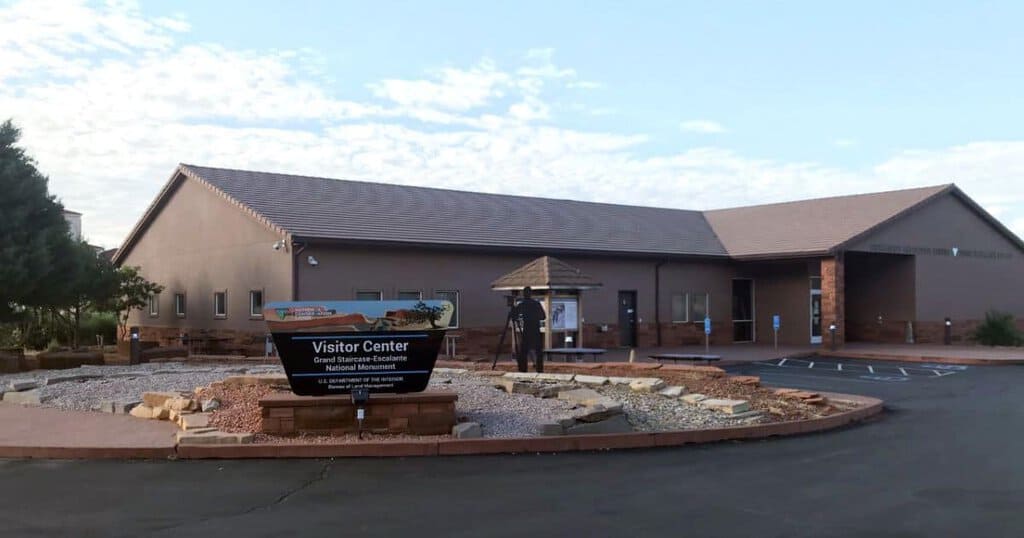
Accurate Trail Information: Kane County Center
As soon as we reached the Kane County Info Center, bright murals graced the exterior of the building. Murals like this-so full of color-bring in much of the essence of the culture of this area. As soon as we went inside, a staff member on hand eagerly presented the historic background of Kane County. The employee was very resourceful in pointing out all the nearby attractions. Her tips helped us to plan our itinerary for the day before actually going out and seeing more. This place is a must-see whether you are just driving through or staying in longer term in Kane County.
The Little Hollywood Museum is a place where movie history comes alive. As we explored the old film sets, props, and memorabilia from classic Westerns, we felt like we were stepping back into the charm of old Hollywood, surrounded by the stunning views of Southern Utah. Plan to spend about 20-30 minutes exploring the displays and reading the brief explanations about the various sets.
Walking through the streets, we could almost see the famous stars and directors who once inhabited the buildings. The atmosphere is rich with stories and nostalgia, echoing the films that shaped the Western genre. This unique blend of history and scenic beauty creates an unforgettable cinematic experience. Best of all, it is free!!
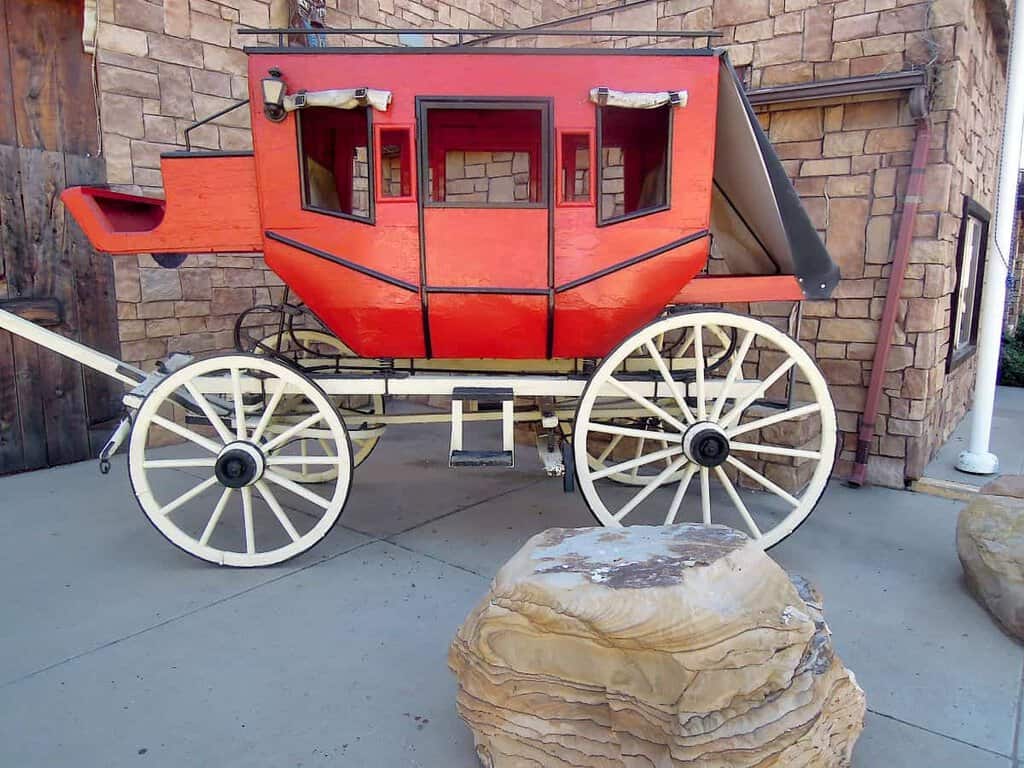
Hidden gems in Kanab: Best Friends Animal Sanctuary
Just 5-miles outside of Kanab on Hwy 89 south, you will see the sign for Best Friends Animal Sanctuary. Situated in a beautiful canyon with high sandstone cliffs, dense forest, a small creek, and colorful cottonwood tree, it appears to be an oasis in this stunning desert landscape. Founded in 1984, this is the largest sanctuary for homeless animals in the country. The sanctuary takes in animals that need physical, emotional, psychological, and other training, making many of them adoptable.
Angels Canyon was originally the location of the Kanab Movie Ranch. The ranch was famous for films such as The Outlaw Josie Wales, Apple Dumpling Gang, Gunsmoke and Daniel Boone. The 3,700-acre property unfortunately was closed in 1985 and eventually purchased by Best Friends.
If you have watched the TV series-Dogtown, then you know Best Friends Animal Sanctuary is a MUST add to your itinerary. We knew their mission was to provide a haven (a no-kill shelter) for over 1800 animals.
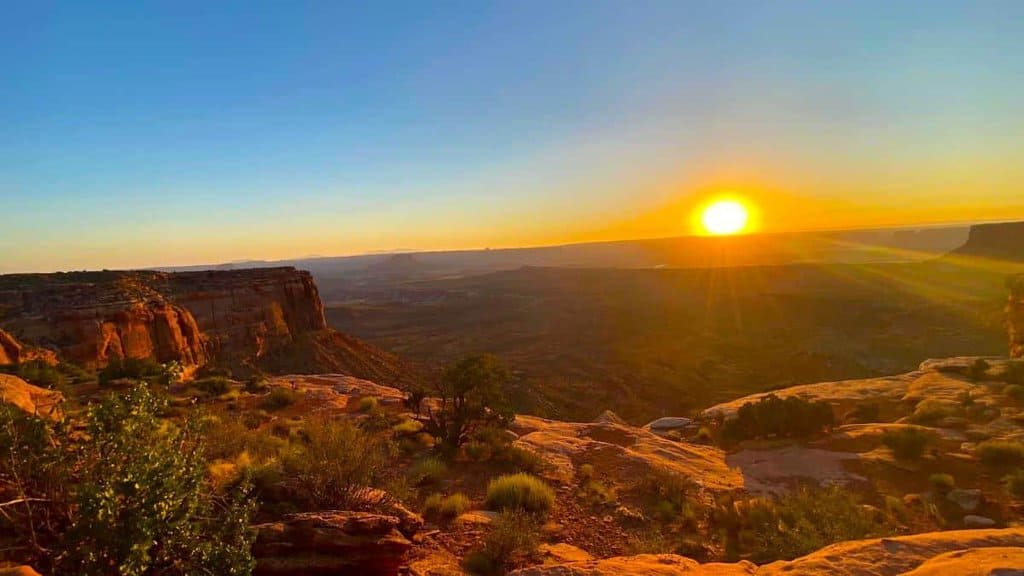
Entering the sanctuary, the red rocks take your breath away. The canyon is beautiful. We entered the Welcome Center to see a small gift shop. The staff was welcoming and informative. They seemed grateful that we took the time to visit and support them. It was great to see the staff’s passion; the animals all seem well cared for. If you have time to volunteer, they can always use the help. The shifts are 3+ hours each, and you choose which are you want to help. You can walk the animals, assist with preparing the food, or just hang out with the dogs or cats. It can be a GREAT experience all the way around!
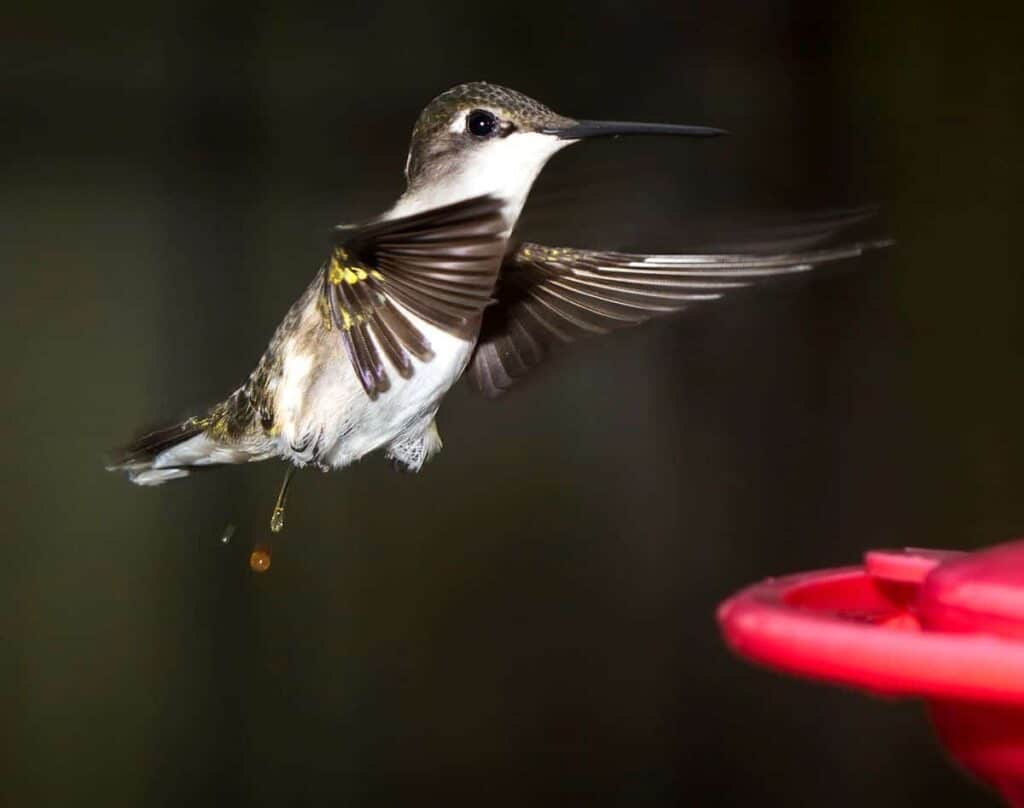
Explore the Best Friends Welcome Center
The welcome center is super clean and has a huge selection of gift items. We purchased bandannas for both our dogs. All donations go directly to the Sanctuary. There are impeccably clean restrooms on-site. They have an excellent lunch at 2 different locations from 11:30 am to 1:00 pm. For only a very low cost, it includes a drink and dessert.
Becoming a member of Best Friends Animal Sanctuary offers many perks, including discounts on cabin or campground bookings. However, be sure to plan ahead and book months in advance, as these accommodations tend to fill up quickly. For hiking enthusiasts, there are many scenic trails, and maps are available at the Welcome Center. Outside the center, we found a peaceful koi pond within a charming wishing garden filled with native flowers. We took a moment for a brief break. We so enjoyed watching the hummingbirds darting around the feeders scattered throughout the garden.
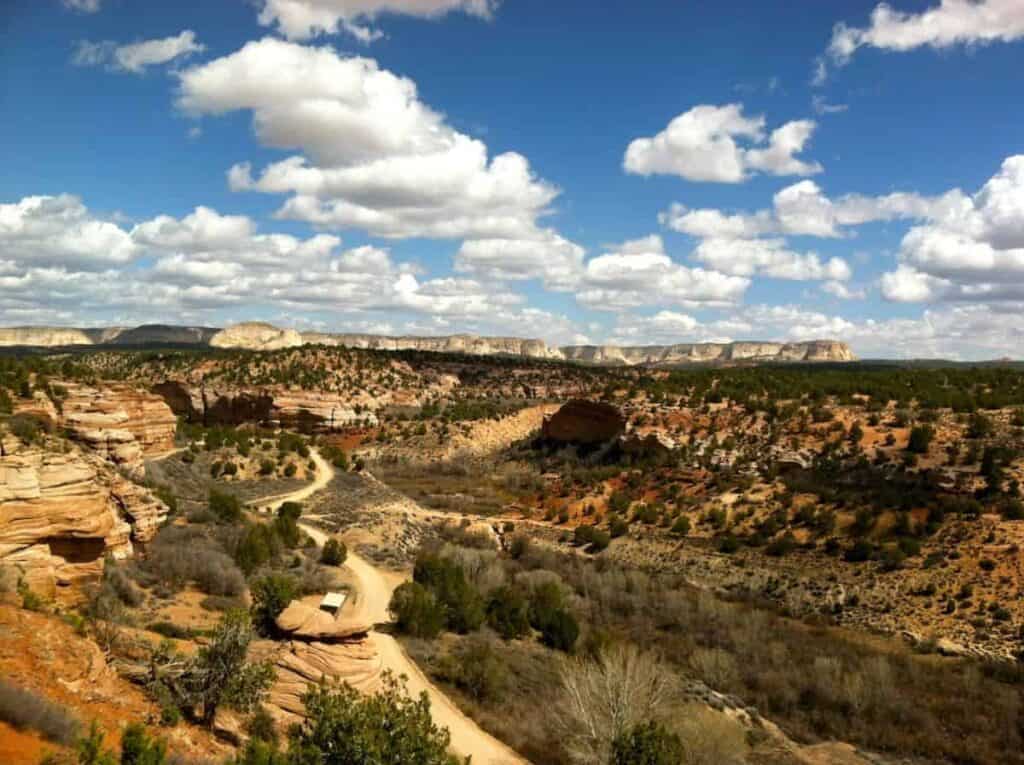
Take Time for a Dog Town Tours
If you have the time, be sure to do the Dog Town tour! We are dog-lovers and would have liked to spend more time with the dogs. I recommend joining their Grand Sanctuary Tour. They offer it 7 days a week (except for Christmas) at 8:30 AM, 10 AM, 1 PM, and 2:30 PM. These 90-minute tours begin at the Best Friends-Welcome Center, where you’ll join a guide inside a passenger van to get an overview of the impressive facility. Free parking is on site. It’s an amazing place and shows you what the human spirit can do.
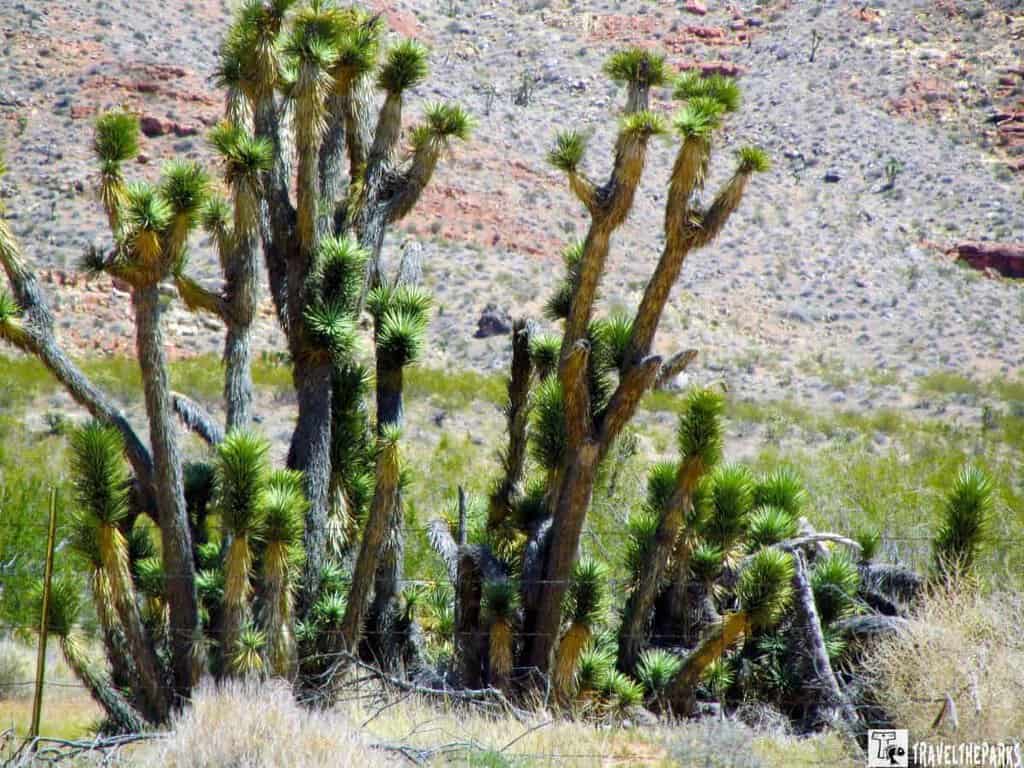
Venture through the Vermilion Cliffs National Monument
From Kanab, Utah, head east on Hwy 89 towards Page. Just outside Kanab, Utah, we pass through the upper portion of the Vermilion Cliffs National Monument. This National Monument, 293,689 acres in area, protects the Paria Plateau, Vermilion Cliffs, Coyote Buttes, and Paria Canyon. This monument covers a large area on the Arizona-Utah state line, north of the Colorado River and west of the town of Page and Lake Powell.
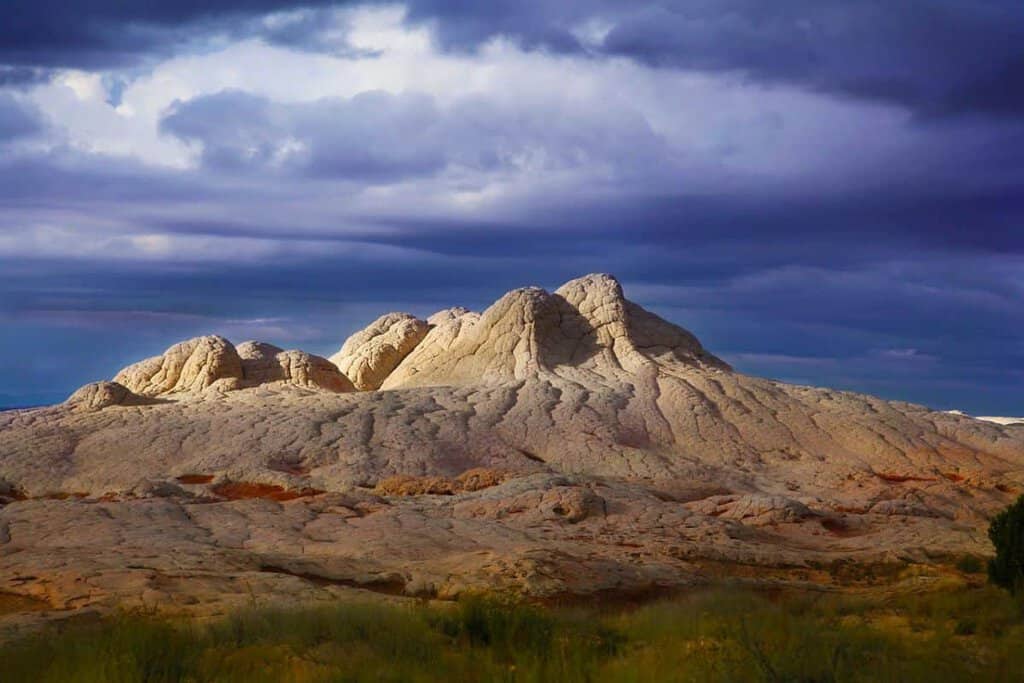
Experience the real Kanab: Coyote Buttes
Coyote Buttes comprise the upper portion of the park along Hwy 89. The major attractions here include The Wave, Buckskin Gulch, and Paria Canyon. I was again inspired by completely different scenery, just when you think another type of landscape or rock formation can not amaze you. The most distinctive feature in the monument is the “vermilion cliffs”, a spectacular ridge of red-orange rock over 30 miles long that soars 2000 feet high. The Vermilion Cliffs are beautiful slick-rock and at every turn in the road, you find something else that is a picture of the beauty of this part of the country. We had many “Ah-Hah!” moments as we walked the trails.
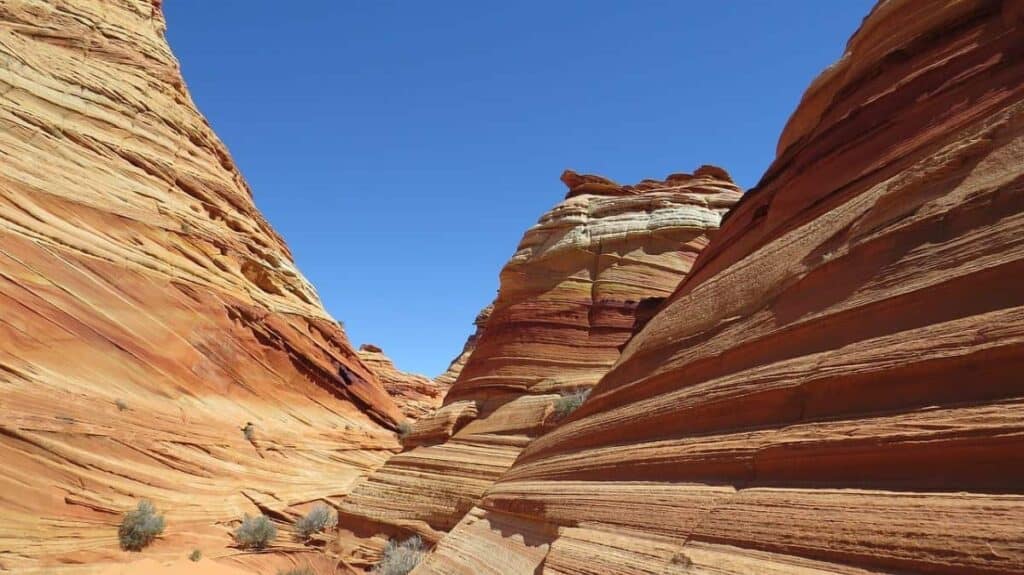
The views of the beautiful colored Navajo Sandstone rocks are dramatic and spectacular. To venture into the heart of the monument, you will need to have a high-clearance vehicle, as most of the roads are unimproved.
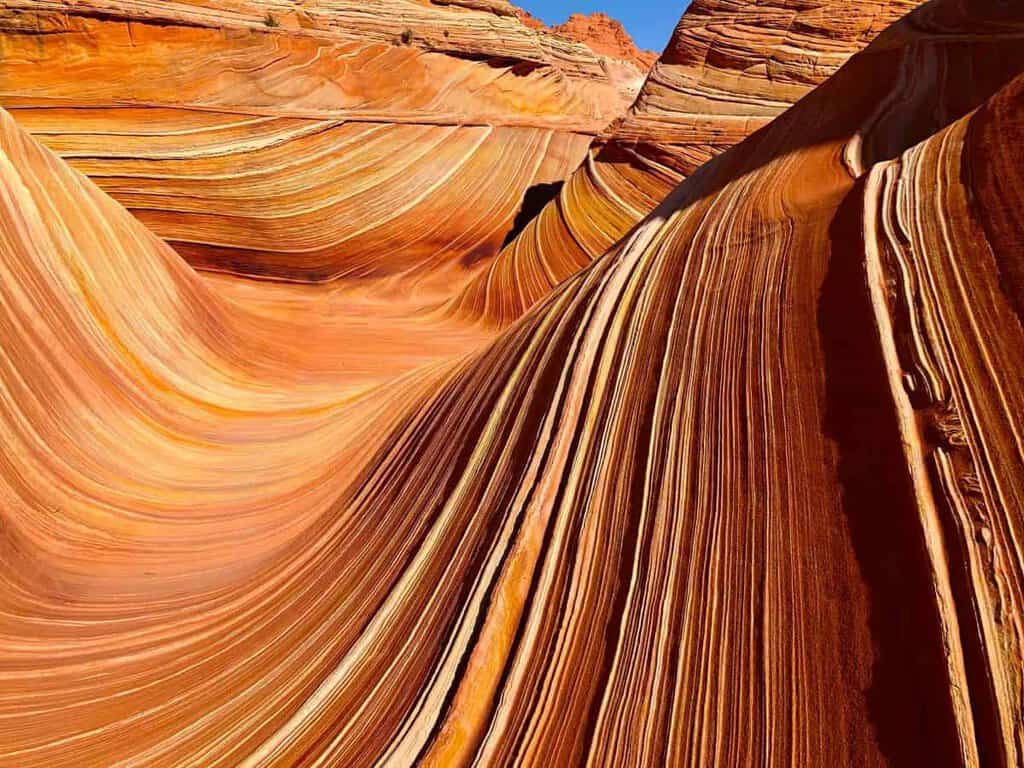
Best of Kanab, Utah: Craving More Adventure? Try The Wave
If you have the time, a must-visit site is The Wave. They require a permit to hike the Wave and they give only 20 each day. You can enter the lottery 2 ways: either online 3-4 months in advance or the day before at the National Monument Visitor Center in Kanab, Utah. This hike is not for the faint of heart. You need to carry plenty of water and be prepared for intense sun exposure. This is a formidable landscape despite its beauty. Unfortunately, we had not scheduled enough time to hike this trail. However, I would recommend this as a bucket list item.

Venture into Kanab’s Belly of the Dragon
A nice little 20 minute stop right off HWY 89. There is a dirt road on the west side of 89. Look for the brown Zion sign. The dirt road takes you to a parking lot where you can see the entrance to the tunnel. Engineers originally designed the tunnel to divert water. However, it remained unused and has eroded, now resembling a dragon’s belly. This is a very short hike under the highway.
Walking we immediately noticed the temperature became a few degrees cooler on this hot summer day, a pleasant reprieve from the sun. If you like, you could climb the rock face at the end. We decided to skip this.
NOTE: Whenever we hike, we always practice LEAVE NOT TRACE. Unfortunately, graffiti has ruined what would be a stunning hand-carved channel.
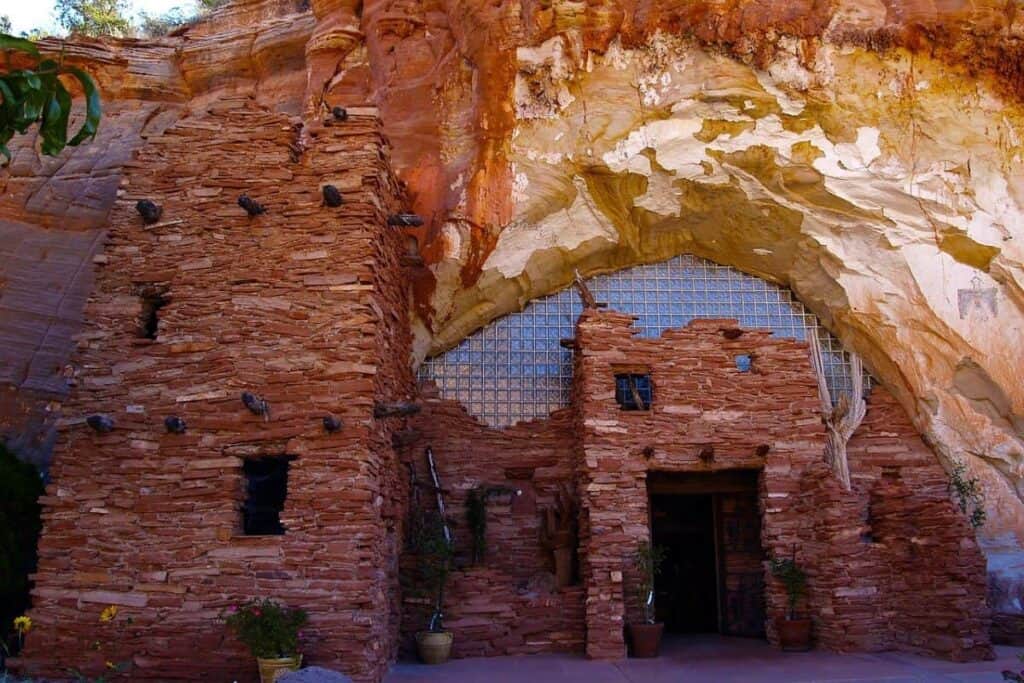
Visit Moqui Cave Museum and Sand Caves
The Moqui Museum is not just a quirky or offbeat roadside attraction, it is also a historic landmark. The museum is privately owned by the Chamberlin family and literally a natural cave carved from the rock.
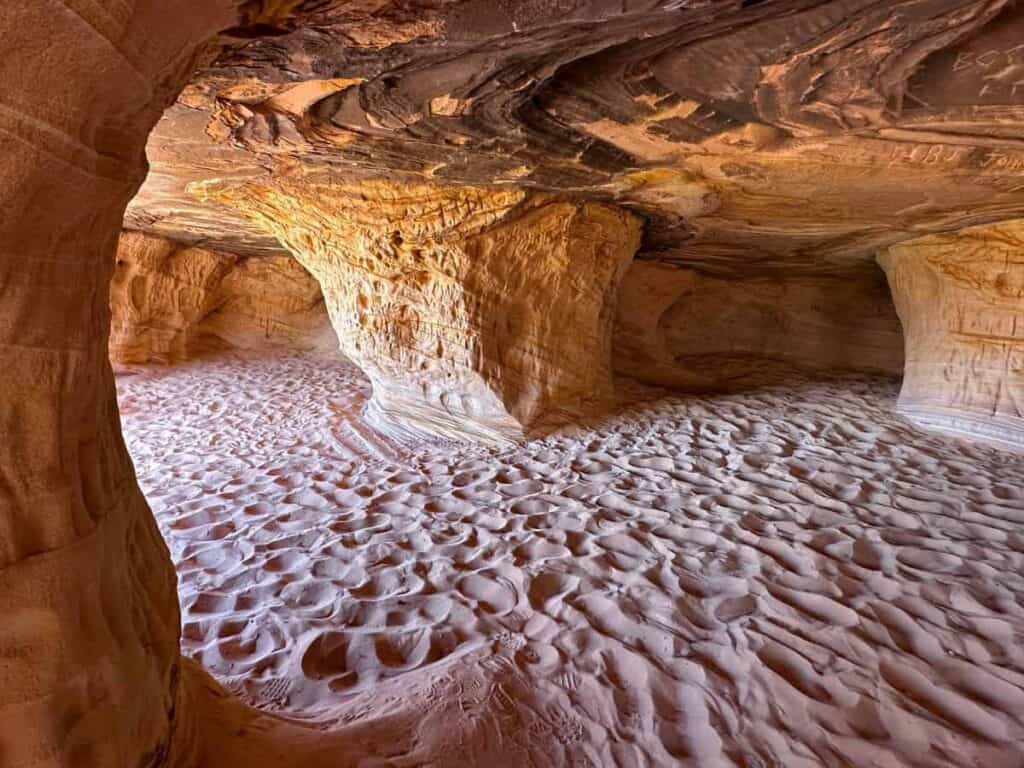
There is an entrance fee for the museum. We paid the small fee before being greeted by the owner. He began telling us about the history of the cavern. The family created the museum in the early 1950s, first whitewashing the walls before opening a saloon operation during the time of prohibition. One story outlined how the cave served as a dance hall, as it has interesting acoustics. When Kanab was the center for filming westerns, many movie stars frequented the bar. The Mormons settled the valley in the 1800s; it was quite fascinating learning the history.
After the tour, we explored at our leisure. The impressive collection is a little disorganized, but it is worth a look. The cave contains a unique assortment of artifacts, such as dinosaur tracks, a beautiful collection of fluorescent minerals, Native American relics, and other memorabilia. I can imagine how this place must have looked in the late 1960s, much like a drive along Route 66.
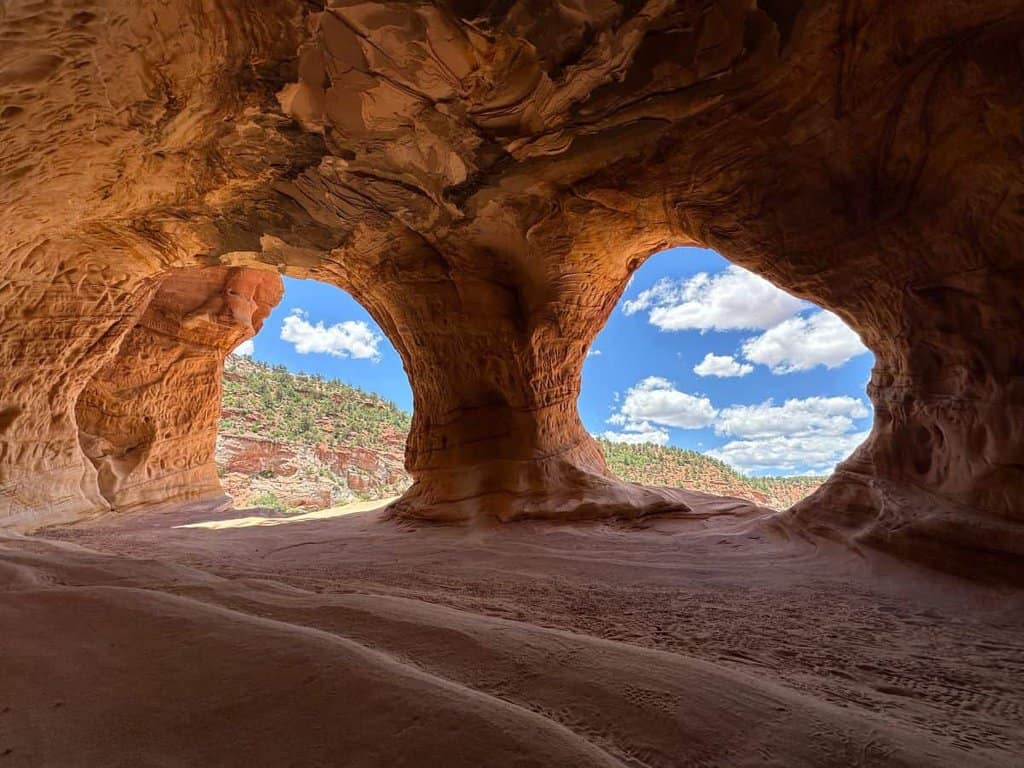
Tackle the Sand Cave Scramble Hike
This was a wonderful short hike just outside of Kanab that we wouldn’t have known about without speaking to our Airbnb host. He told us it was worth exploring the Sand Caves 0.4 miles further down the road from the Moqui Cave Museum. If you don’t mind a bit of a slick rock scramble, this is a cool 0.5-mile hike. However, we later learned that if we had gone further left, it would be an easier climb. Be sure to wear good shoes or hiking boots, as the rock is very slick.
The well-worn trail is easy to follow the 1/4 mile to the caves. These caves are artificial, not naturally formed. People originally mined sand in the cave to make glass in the 1970s. There are a few different rooms to explore.
PRO Tip: Arriving an hour before sunset is best for pictures. We arrived a little before and waited until the light felt right. A rare sight to behold is watching the sunset here.
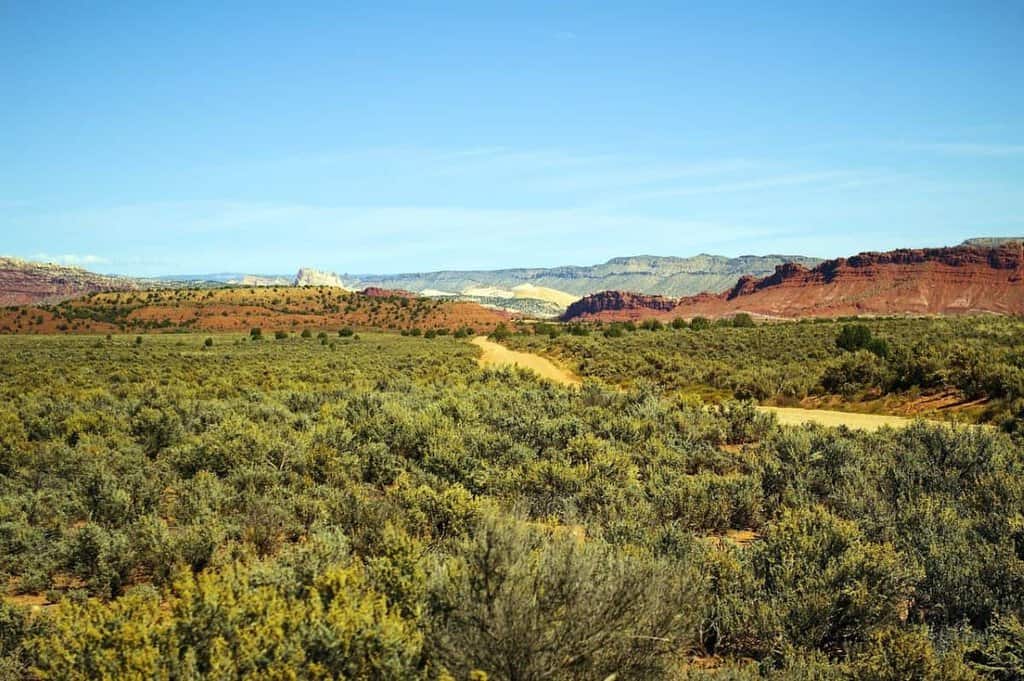
Discover The Mystery of Old Paria
Old Paria is part of the Grand Staircase-Escalante National Monument and to this visit here, drive east from downtown Kanab on Highway 89 for approximately 31 miles, where you will see a large sign that reads “Paria Townsite” and a smaller sign that reads “Historical Marker”. Just past these signs, you will see the turnoff on the north side of the road, where there is a parking area with a large rock marker. There is plenty of parking, with bathrooms and a picnic area. From this parking area, you will drive the dirt road for five miles until you come to the parking area for the Paria movie set, which burnt down in 2006.
We continued down the road, seeing breathtaking beauty around every curve. About a mile past this parking area, north towards the river, you will come to the old town-site of Paria settled by the Mormons. A few building foundations and the Old Paria Cemetery are all that’s left. The road is unpaved and can become flooded because of the Paria River.
Use caution when traveling this road. We only did a brief stop here to photograph the red “painted” stratified cliffs.
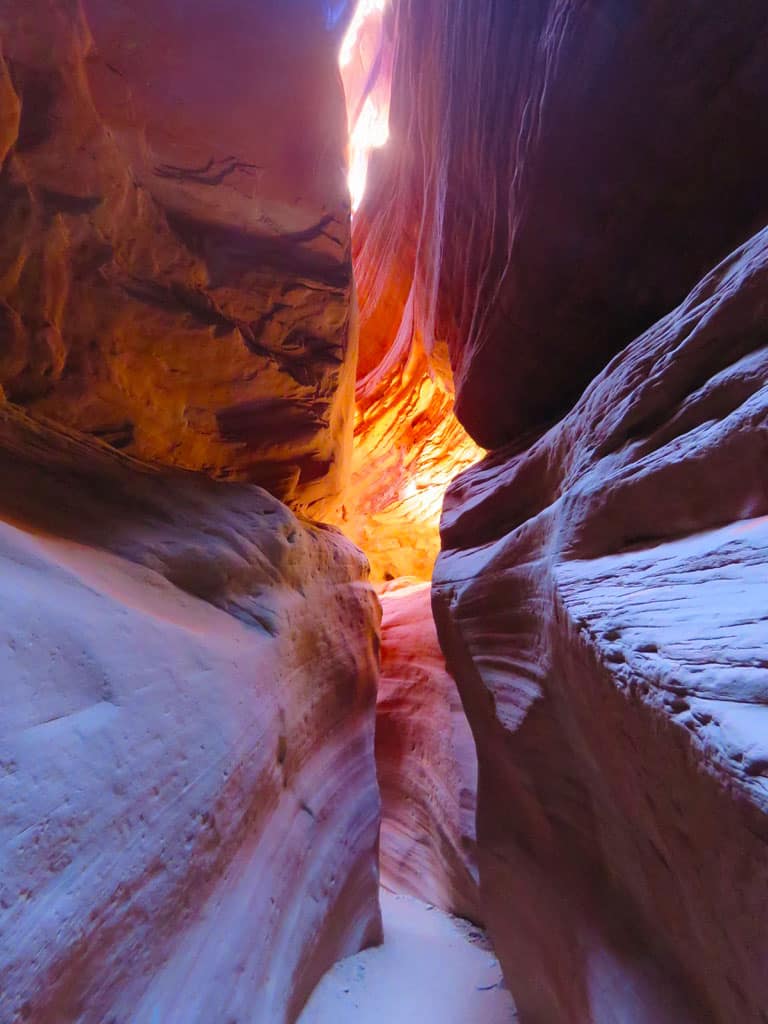
A History Lesson-A Step Back in Time
In 1865, Paria, which was first settled by a Mormon group led by Peter Shirts, It was inhabited from 1870 to 1929, then later used as a filming location. In 1870, some of the Shirts’ followers broke off and founded the town of Pahreah. Pahreah grew through the 1870s, acquiring a general store, a church, a few sandstone houses, and some log homes.

The population grew to 47 families. However, the town experienced hard times in the 1880s. The Paria River flooded every year 1883-1888, damaging the buildings and eroding farmland. Many began to move away, leaving only eight families left in 1892. However, for some inexplicable reason, the town was granted a post office that same year, under the name of Paria. When a mining operation fell through after one year, the post office closed in 1914.
Paria Becomes a Hollywood Movie Town
In later years, Hollywood’s film industry became interested in using the picturesque ghost town, because of the canyon’s panoramic background being an ideal backdrop for making Western movies. They filmed Buffalo Bill in Paria in 1943. Later in 1961, the Rat Pack film Sergeants 3. The Rat Pack was the biggest western ever filmed in Kane County. Not satisfied, the film’s creators constructed an imitation Old West town about a mile to the west of Paria. Visitors often confused this movie set with the real Paria, as it fell into disuse in 1976 after the filming of Clint Eastwood’s, “The Outlaw Josey Wales“. There isn’t much of the town left at the end of the road, but visitors are still enchanted by the stunning coloring in the cliffs amid the radiant sunsets.
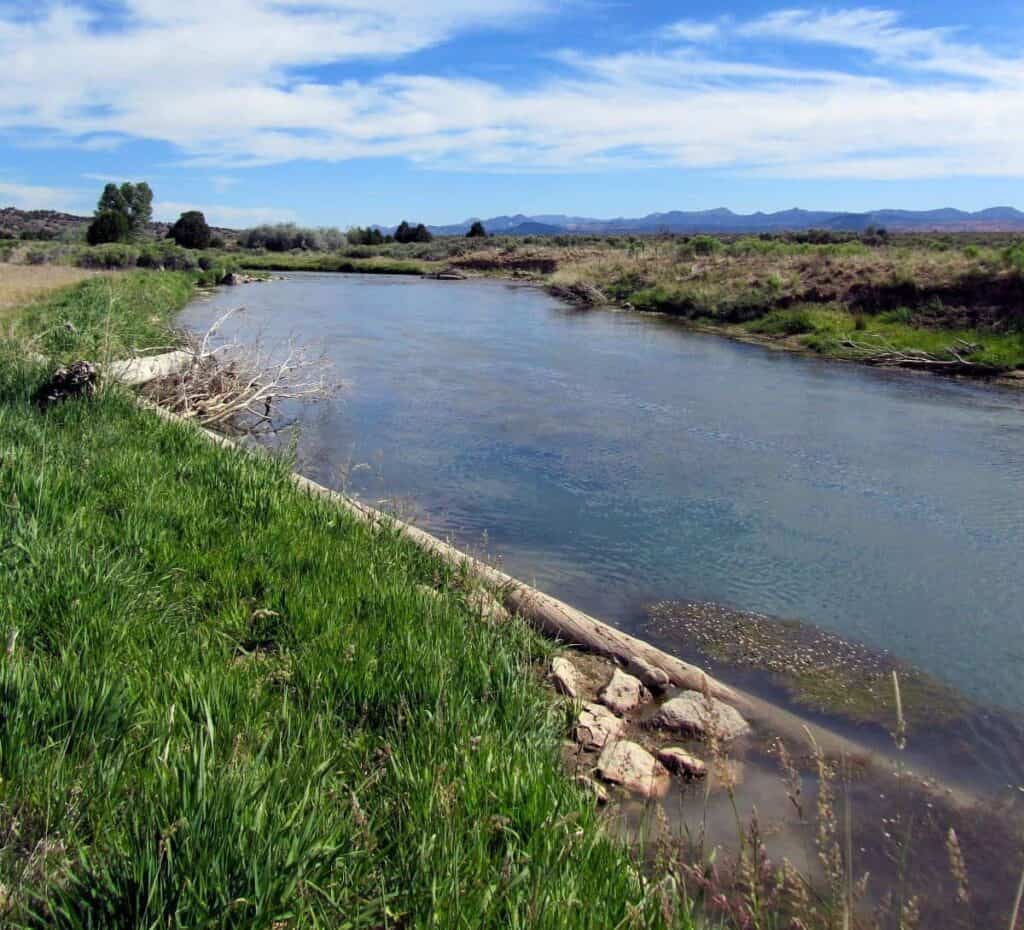
Explore the Sevier River Valley
At Mt. Carmel Hwy Junction, turn north. Rte. 89 parallels the East Fork of the Virgin River. Enclosed by mountains on the east and west, this is a very long valley. Many small historical towns dot the valley floor. Mormon pioneers who settled this area of the Colorado Plateau established farms and ranches. Near Hatch, the journey of the Sevier River begins. The river meanders through the long valley, cattle roam large pastures. The river is known for three kinds of trout that are restocked periodically by the local fish hatchery.
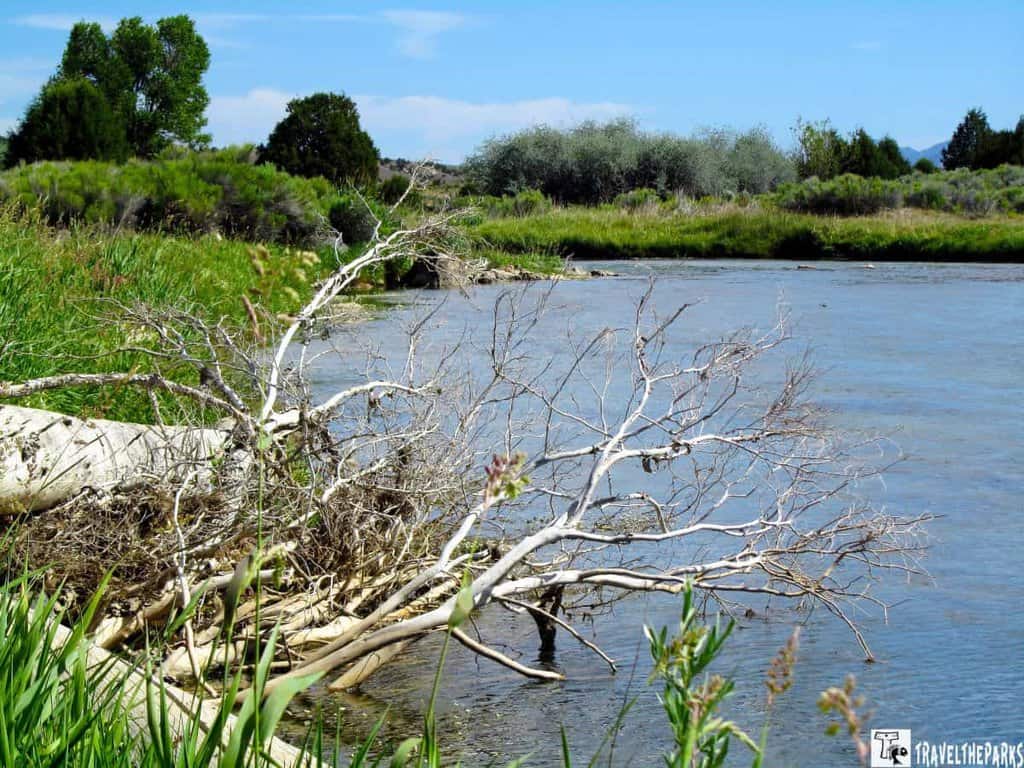
Near the town of Panguitch, we narrowly avoided a large mule deer buck that ran across the highway. We pulled to the side of the road and watched the deer continue its run along the river. Since we were stopped, we decided to stretch our legs a bit. We squeezed through a gate and walked along the river. We could see the trout in the clear waters of the Sevier River. The trout strategically taking advantage of the undercut banks to ambush a meal. I believe the water here is blue ribbon quality, unfortunately; we did not have a Utah fishing license.
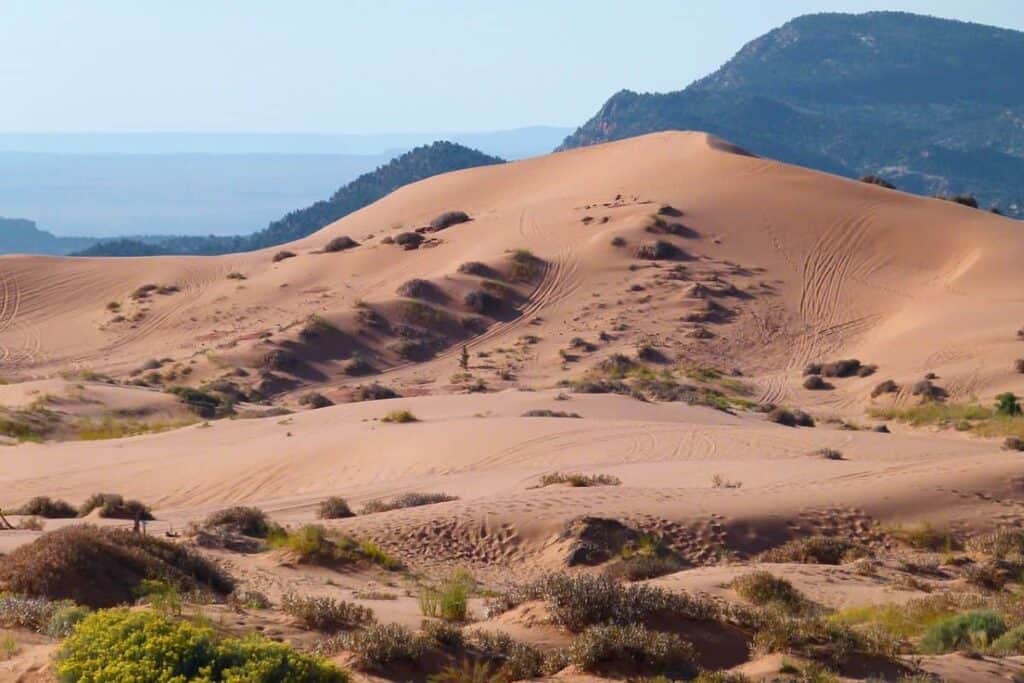
Unearth the Coral Sands of Kanab
Between Mount Carmel and Kanab is a small gem- Coral Pink Sand Dunes State Park. Pink sand dunes just sounded like something we would like to see. The state park is located just off Hwy 89. The dunes seem endless as you look towards the horizon. We started at the overlook before venturing onto the dunes, headed toward the far line of ponderosa pines. Remember to bring sunscreen, a hat, polarized sunglasses, and plenty of water. We used a dry bag to protect the camera from the sand and wind.
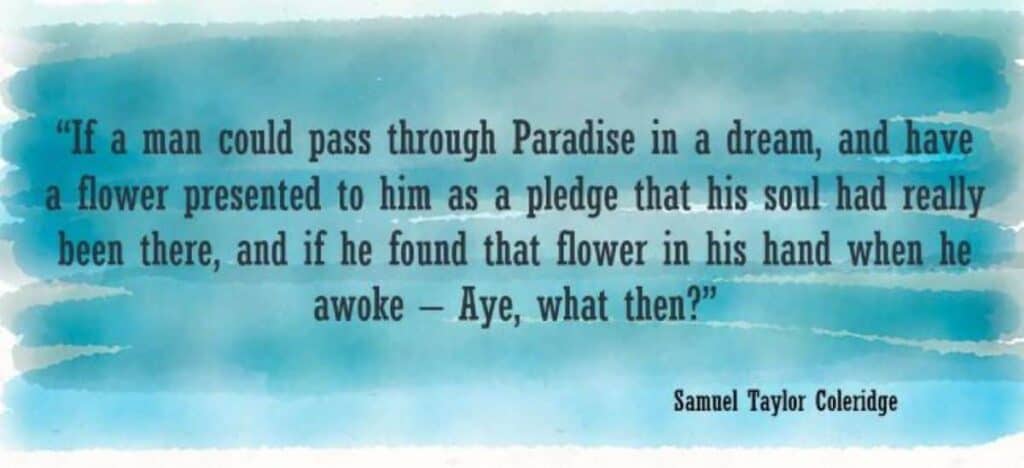
Walking on the dunes is like walking in deep snow, arduous at best. For every step forward, you seem to take two steps back. The sand is incredibly soft. You will be removing tons of sand from your shoes later. It was a beautiful afternoon, and we had a great time walking the dunes. Our only complaint was the constant whine of ATVs roaming the dunes. It is difficult to avoid them and find solitude. The next time, we will rent a board to ride down the dunes.
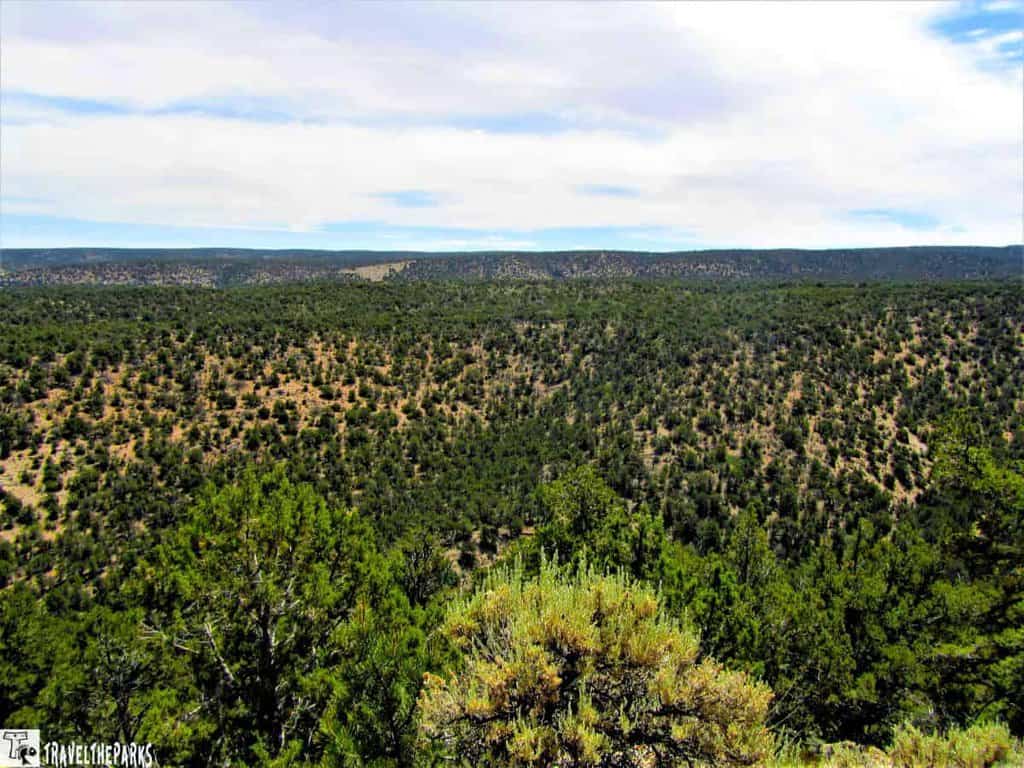
Final Thoughts on Discovering What Authentic Kanab has to Offer
When people discover how authentic Kanab can be, it is an amazing backdrop of the spectacular landscapes. We thoroughly enjoyed our time here. It far exceeded our expectations!!
Have you been to Kanab? What did you like best? Share your ideas with us! We would love to hear your comments!

